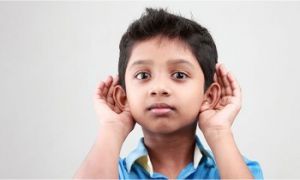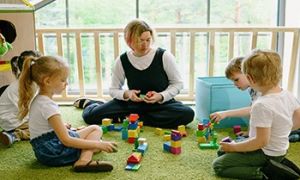Negative framing and brain-building language shape how children perceive themselves, their abilities, and their learning experiences. The way educators communicate can either foster confidence and curiosity or create self-doubt and hesitation.
Negative Framing
- Focuses on mistakes: “That’s not how you do it.”
- Creates pressure: “Hurry up, you’re taking too long.”
- Limits exploration: “Be careful, don’t make a mess.”
Brain-Building Language
- Encourages problem-solving: “What do you think will happen if we try this?”
- Supports effort over outcome: “I see you’re working really hard on that!”
- Invites curiosity: “Tell me about what you’re doing.”
Shifting from negative framing to brain-building language helps children develop resilience, confidence, and a love for learning. Instead of focusing on what’s wrong, educators can guide children toward discovery and growth.
Implementing Brain Building Language
Here are some examples of brain-building language that educators and can use in everyday conversations with children:
Encouraging Problem-Solving
-
Instead of: "That's not how you do it."
-
Try: "What do you think will happen if we try it this way?"
Supporting Effort Over Outcome
-
Instead of: "Good job!"
-
Try: "I love how you kept trying different ways to build that tower!"
Inviting Curiosity
-
Instead of: "Be careful, don’t make a mess."
-
Try: "What do you notice happening when you mix these colors?"
Building Confidence
-
Instead of: "That’s wrong."
-
Try: "Let’s think about another way to solve this!"
Encouraging Reflection
-
Instead of: "What are you making?"
-
Try: "Tell me about what you’re working on!"
These small shifts in language help children develop critical thinking, resilience, and a love for learning.
Brain Building Language Examples For Different Age Groups
Here are brain-building language examples tailored to different age groups:
Infants (0-12 months)
-
Instead of: "No, don’t touch that!"
-
Try: "Let’s explore this safe toy instead!"
-
Instead of: "Stop crying."
-
Try: "I hear you. You’re feeling upset, and I’m here to help."
Toddlers (1-3 years)
-
Instead of: "Be careful, don’t spill!"
-
Try: "Let’s pour slowly and see what happens!"
-
Instead of: "That’s wrong."
- Try: "Let’s try another way and see what works!"
Preschoolers (3-5 years)
-
Instead of: "What are you making?"
-
Try: "Tell me about what you’re working on!"
-
Instead of: "You need to hurry up."
-
Try: "Take your time and enjoy what you’re doing!"
School-Age Children (5+ years)
-
Instead of: "That’s not how you do it."
-
Try: "What do you think will happen if we try it this way?"
-
Instead of: "You should know this by now."
-
Try: "Let’s figure this out together!"
Further Reading
Don't Say Good Job Posters
Turning Children's Weaknesses Into Strengths


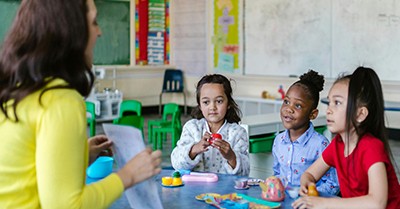

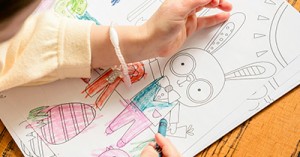


 As an Educator in Australia, your pay rate falls under the Children’s Services Award 2010. This award states the minimum amount that an employer can
As an Educator in Australia, your pay rate falls under the Children’s Services Award 2010. This award states the minimum amount that an employer can When working as a qualified Early Childhood Teacher (with a university degree) within a service, your rate of pay will come from the Educational Services
When working as a qualified Early Childhood Teacher (with a university degree) within a service, your rate of pay will come from the Educational Services When working as a Diploma Qualified Educator your pay rate is from the Children's Services Award 2010. This Award states your minimum rate of pay
When working as a Diploma Qualified Educator your pay rate is from the Children's Services Award 2010. This Award states your minimum rate of pay When working as a Cert 3 Qualified Educator, your pay rate is from the Children's Services Award 2010. This Award states your minimum rate of
When working as a Cert 3 Qualified Educator, your pay rate is from the Children's Services Award 2010. This Award states your minimum rate of Educational Leaders play a crucial role in their early childhood service by ensuring that the educational program aligns with best practices and supports the holistic
Educational Leaders play a crucial role in their early childhood service by ensuring that the educational program aligns with best practices and supports the holistic In early childhood education and care, ratios are more than a technicality—they are a frontline safeguard. Every child deserves responsive supervision, emotional connection, and developmental
In early childhood education and care, ratios are more than a technicality—they are a frontline safeguard. Every child deserves responsive supervision, emotional connection, and developmental With the new national child safety reforms kicking in on 1 September 2025, early childhood services like yours have a real opportunity to lead the
With the new national child safety reforms kicking in on 1 September 2025, early childhood services like yours have a real opportunity to lead the Here’s a comprehensive Mobile Phone and Smart Watch Policy tailored for early childhood education and care (ECEC) services in Australia, aligned with the latest 2025
Here’s a comprehensive Mobile Phone and Smart Watch Policy tailored for early childhood education and care (ECEC) services in Australia, aligned with the latest 2025 The Sea of Fish Challenge is a national initiative that invites children, educators, families, and communities to create and display fish artworks as a symbol
The Sea of Fish Challenge is a national initiative that invites children, educators, families, and communities to create and display fish artworks as a symbol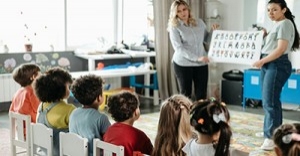 Across the early childhood education and care sector, educators are sounding the alarm: current staffing ratios are insufficient to deliver safe, meaningful, and developmentally appropriate
Across the early childhood education and care sector, educators are sounding the alarm: current staffing ratios are insufficient to deliver safe, meaningful, and developmentally appropriate